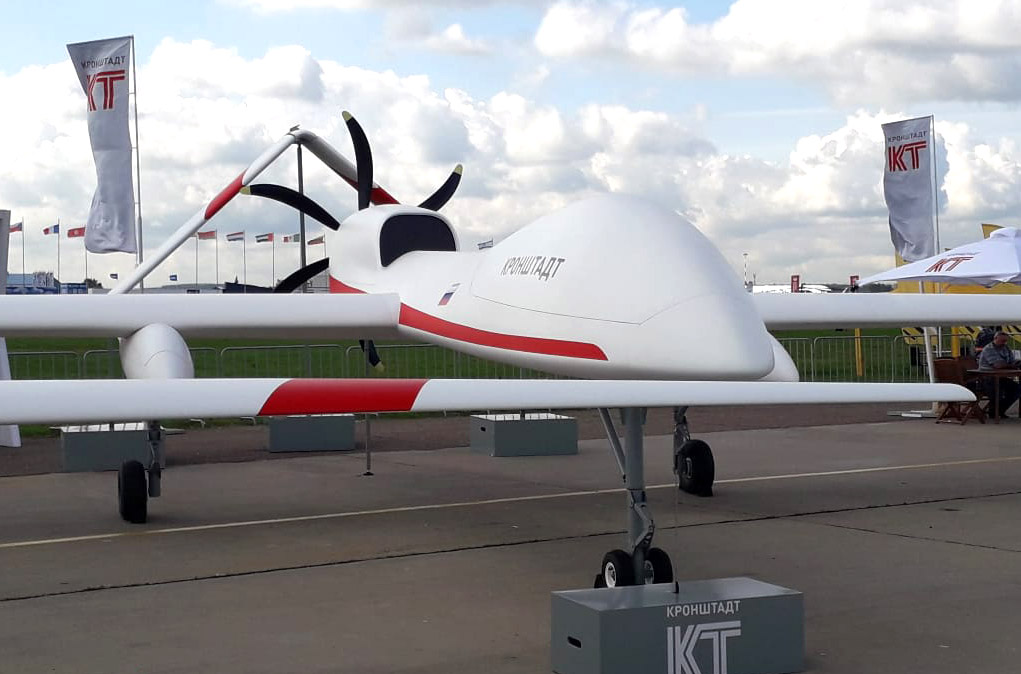In recent years Russia has gained extensive combat experience using small and tactical drones, particularly in Syria, on reconnaissance, target acquisition, and battle damage assessment. With a growing emphasis on reconnaissance and aerial operations, Russia has increased the role of UAS in the conflict in Crimea and Ukraine and the Syrian war. Since the beginning of operations in Syria, some 70 Russian drones are operating in the country have accumulated 140,000 flight hours in 23,000 sorties.
Subscribe to read and view images in the full version of this article
Although the drones operated in the Syrian theater proved highly effective in those missions, but the Russian forces acknowledge they were trailing behind other nations operating much more capable systems in the theater. These include the U.S. led coalition, Turkey, Iran, and Israel). While operations of small tactical UAS (Orlan 10), and Forpost (a former Israeli Searcher II, now assembled in Russia) proved effective, other nations deployed much larger and more versatile drones in the theater, with wider versatility and better mission effectiveness. Specifically, most of these drones, such as the American MQ-9, Turkish Anka and Bayraktar, and Iranian Shahed 129 are armed, and therefore capable of performing armed-reconnaissance missions, engaging targets of opportunity through quick ‘sensor-to-shooter’ cycles.
Apart of being light and unarmed, Russian drones are also limited in their capabilities – mission endurance, range, and payload versatility, limited their operation to visual flight rule – clear sky, day or night. Those drones are relatively small, are operate at medium to low altitude and do not have the capacity to carry weapons.
Guided and funded by government and industry, the Russian effort to match the capabilities of adversary nations and market competitors is gaining momentum, aiming to improve existing systems and introduce new platforms. This effort represents a major improvement in capabilities, as it leverages Russian knowhow in aeronautical design, radio-electronic, electro-optics, and electronic design, overcoming the inherent limitations of Russian technologies that are denied access to advanced capabilities by the sanctions imposed by the US government.
Following are some of the new and improved platforms based on this combat experience, introduced by Russian companies at the MAKS 2019 exhibition.
Orlan-10 – Over 1,000 units have been fielded and provide the most common UAS operating with Russian military land forces.
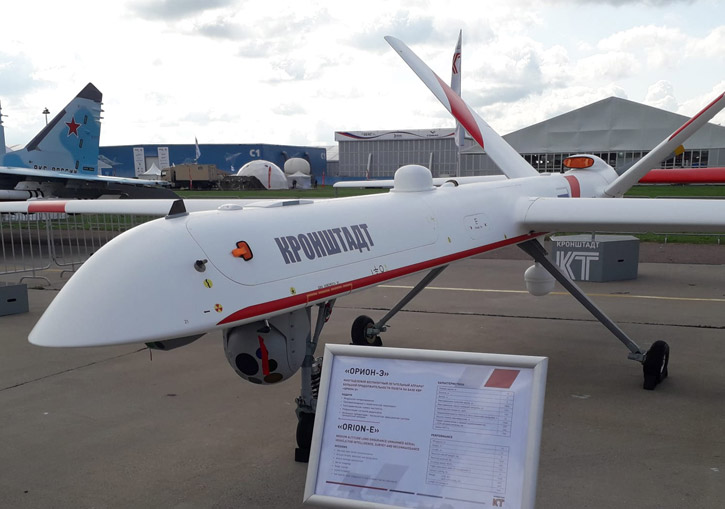
Forpost M – an improved version of Forpost, has an improved EO/IR payload and the capability to carry a maritime and ground surveillance radar, improving the drone’s all-weather capability in maritime and coastal surveillance. Forpost M maintains the wing-span of 8.50 meters but adds two hardpoints supporting weapon carrying of small guided munitions.
Orion-E – has a wing-span of 16 meters it is designed to operate at a maximum altitude of 22,000 ft (7,500 m), and a range of 250 km (300 with enhanced control link) and mission endurance of 24 hours. At a maximum take-off weight (MTOW) of one-ton, an Orion-E can carry a payload of 200 kg. More information on Orion is available here.
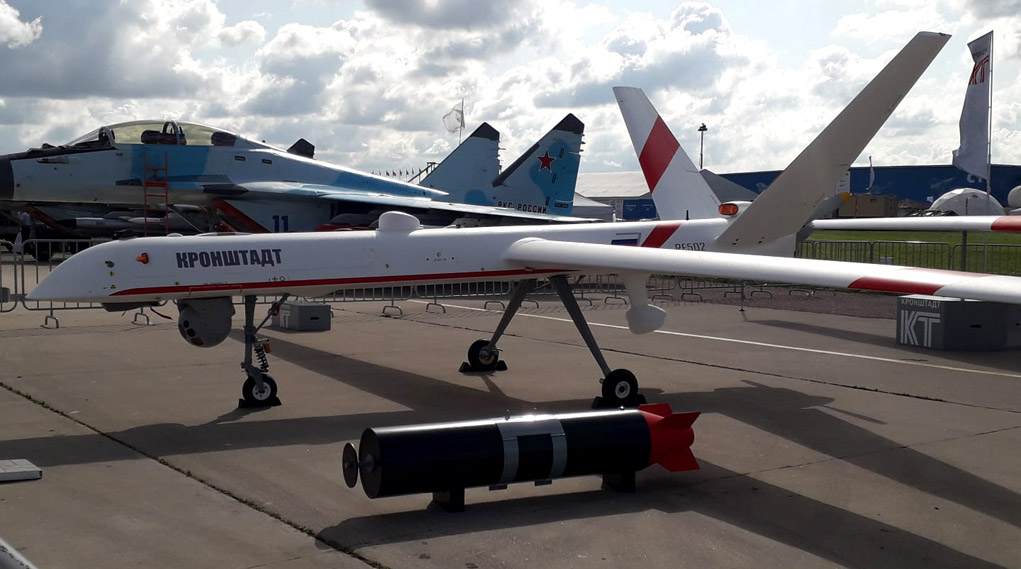
Orion-2 – KT also developed a larger version, known as Orion-2, designed to operate at higher altitudes (up to 40,000 ft). This version will have an MTOW of 5,000 kg carrying one-ton of payload at a speed of 350 km/h. Orion-2 will be able to fly missions exceeding 24 hours, or 5,000 kilometers range using a satellite communications terminal. KT displayed a full-scale model of Orion-2 at MAKS 2019, the company expects to fly the prototype in 2020-2021. According to company officials, most of the airframe and wings of Orion-E and Orion-2 are made composites, both structural and skin elements.
The model displayed at MAKS2019 shows a typical MALE platform powered by a single-engine. A twin-boom design coupled with an inverted V tail, clearing the necessary space for a six-swept-tip blade propeller. The large dorsal air intake and the propeller details indicate the use of a turboprop. The turboprop performs better at high altitude and is believed to offer a better economy, reaching cruising altitude and maybe when descend and ascending several times on a mission.
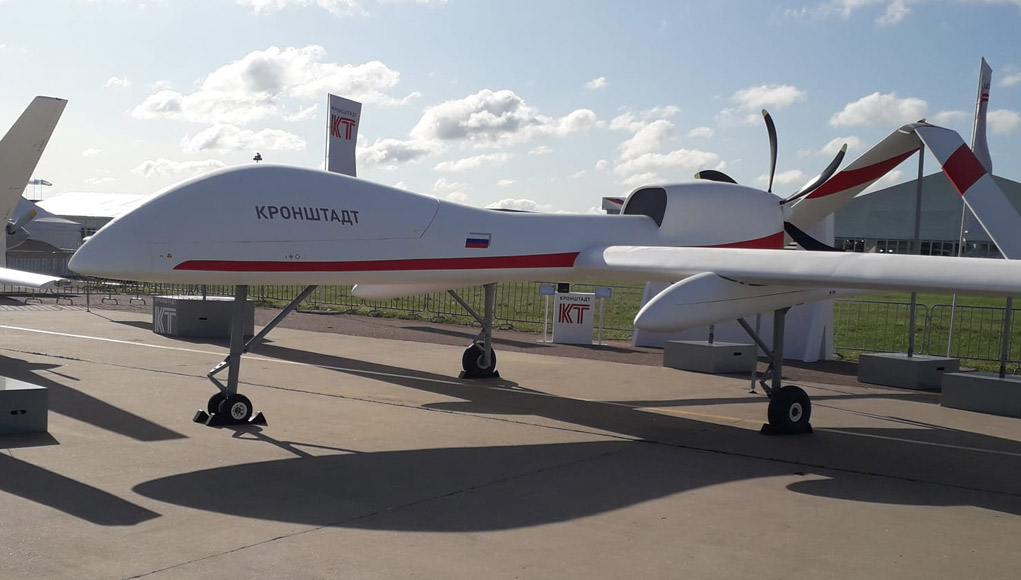
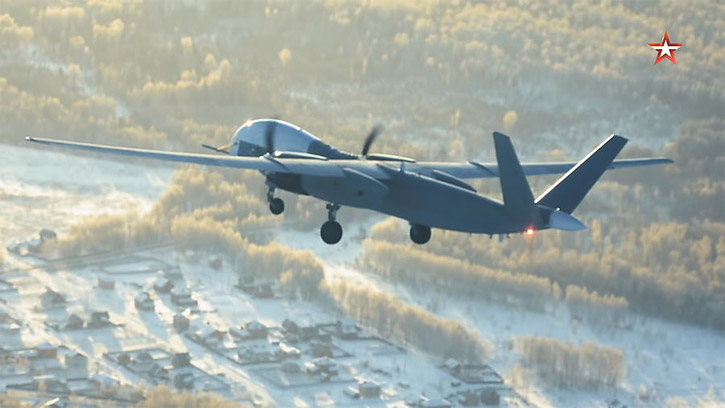
Altius – Since 2011 Sokol (Simonov design bureau) has built three prototypes of the Altius heavy HALE drone also designed for up to 5 to 7-ton MTOW. Operating at an altitude of 40,000 ft (12,000 m) and mission range of 10,000 km. Altius has a high-wing solution with a 28.5-meter span and a V-shaped tail. With the conclusion of the evaluation program, Altius could enter the prototype stage by early 2020.


Korsar – a new platform developed from tactical missions as a weaponized combat drone. At a 200 KG MTOW, the drone has a wing-span of 6.5 meters and an inverted V-tail. It is designed for operation at medium-low altitude at a range of 120 km. Korsar is designed to carry several payloads (EO/IR, electronic combat) and weapons on missions of up to 10 hours.
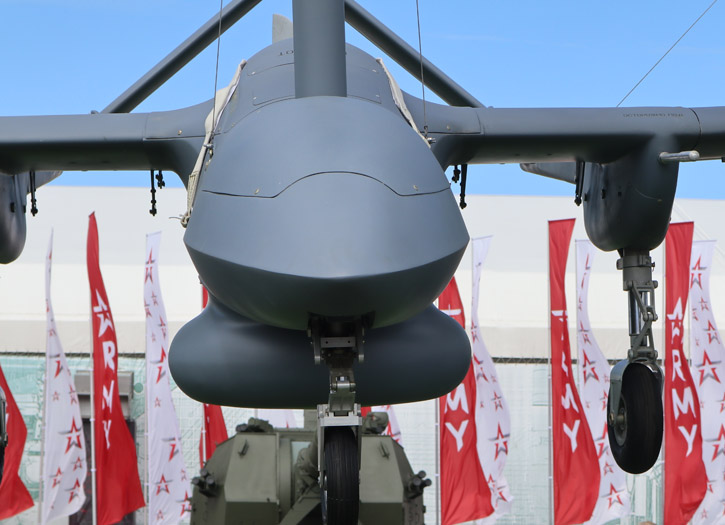
Frigate – The Kronstadt group has also developed an innovative tilt-rotor drone powered by two propfan units that provide vertical lift for takeoff and landing and transition to forward flight at higher altitude. Dubbed ‘Frigate’ the design also combines the wing and inverted V-tail to form a unique bi-plane configuration that adapts well to the convertible rotor.

Su-70 Okhotnik B – the Russian Sukhoi design bureau has recently flown the UCAV technology demonstrator designed to become an element in a future manned-unmanned team operated by the Russian Air Force. Read our full report here.

